History and exam
Key diagnostic factors
common
presence of risk factors
Key risk factors include children found or suspected of ingesting plants; adults foraging for edible wild plants who misidentify plants; creating plant concentrates for ingestion by brewing, extracting, or chewing.
tachycardia
May be direct effect of cardiac stimulants (e.g., blue cohosh, poison hemlock, golden chain, Indian tobacco, lupin, tobacco, green tea, yerba mate, bala, ma huang, or khat); antimuscarinics (e.g., jimsonweed, locoweed, belladonna, henbane, European/true mandrake); or nicotine-like alkaloids (e.g., blue cohosh, poison hemlock, golden chain, Indian tobacco, lupin, or tobacco); or secondary to volume depletion from gastrointestinal losses.
hypertension
May be direct effect of caffeine/theophylline/ephedrine/synephrine-like stimulants (e.g., blue cohosh, poison hemlock, golden chain, Indian tobacco, lupin, tobacco, green tea, yerba mate, bala, ma huang); antimuscarinics (e.g., jimsonweed, locoweed, belladonna, henbane, European/true mandrake); or nicotine-like alkaloids (e.g., blue cohosh, poison hemlock, golden chain, Indian tobacco, lupin, laburnum, or tobacco).
hypotension
May be direct effect of digitalis-like glycosides (e.g., monkshood, lily of the valley, foxglove, oleander, red squill); or muscarinics (e.g., betel nut, calabar bean, ordeal bean, pilocarpus plants).
May also occur due to internal haemorrhage from ingestion of sweet vernal grass, tonka beans, bedstraw, sweet clover, red clover, or horse chestnut.
May occur due to myocardial depression from ingestion of autumn crocus or glory lily. [Figure caption and citation for the preceding image starts]: OleanderFrom private collection of Gerald O'Malley [Citation ends].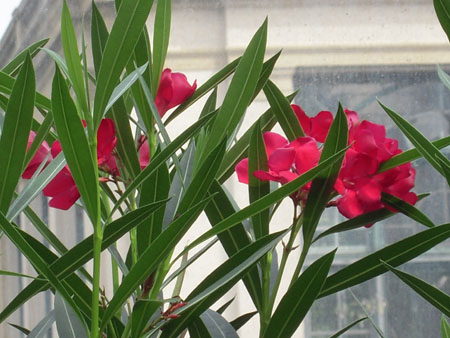
miosis
May be direct effect of muscarinics (e.g., betel nut, calabar bean, ordeal bean, pilocarpus plants) or opiate narcotic-containing plants.
mydriasis
May be direct effect of antimuscarinics (e.g., jimsonweed, locoweed, belladonna, henbane, European/true mandrake); nicotine-like alkaloids (e.g., blue cohosh, poison hemlock, golden chain, Indian tobacco, lupin, or tobacco); or other sympathomimetics (bitter orange, ephedra, guarana).
uncommon
bradycardia
May be direct effect of muscarinics (e.g., betel nut, calabar bean, ordeal bean, pilocarpus plants); digitalis-like glycosides (e.g., monkshood, lily of the valley, foxglove, oleander, red squill); or indirect effect of vagal overstimulation by vomiting and gastrointestinal cramping.[Figure caption and citation for the preceding image starts]: OleanderFrom private collection of Gerald O'Malley [Citation ends].
altered mental state
Can occur after ingestion of numerous plants. May specifically occur after ingestion of psychotropic alkaloids (e.g., morning glory, poppy, absinthe, marijuana, coca, peyote, Hawaiian baby woodrose, nutmeg).
Impaired consciousness may occur following ingestion of hepatotoxic plants (e.g., blue-green algae, ragworts, other Senecio species, rattleweeds, Heliotropium species, distaff thistle, kava kava, creosote bush) or due to invisible bleeding after ingestion of sweet vernal grass, tonka beans, bedstraw, sweet clover, red clover, or horse chestnut.
May also occur due to acidosis following cassava or prunus plant ingestion.[Figure caption and citation for the preceding image starts]: SenecioFrom private collection of Gerald O'Malley [Citation ends].
hallucinations
Can occur after ingestion of numerous plants. May specifically occur after ingestion of psychotropic alkaloids (e.g., morning glory, absinthe, marijuana, coca, peyote, Hawaiian baby woodrose, nutmeg, Salvia divinorum, adulterated herbal blends (e.g., synthetic cannabinoids), or antimuscarinic plants.
seizures
May be direct effect of water hemlock, Cicuta species, wormwood, absinthe, tansy, sage, Japanese star anise, poison nut, quaker button, strychnos seed, blue cohosh, poison hemlock, golden chain, Carolina jessamine (Gelsemium sempervirens), Indian tobacco, lupin, laburnum, nicotine, or ginkgo; or secondary to hypoglycaemia (e.g., from unripe ackee fruit), or acidosis (e.g., from cassava, prunus plants). Plant poison-induced seizures tend to be multiple and are characterised as generalised muscular spasm and myoclonus rather than focal. [Figure caption and citation for the preceding image starts]: CicutaFrom private collection of Gerald O'Malley [Citation ends]. [Figure caption and citation for the preceding image starts]: CicutaFrom private collection of Gerald O'Malley [Citation ends].
[Figure caption and citation for the preceding image starts]: CicutaFrom private collection of Gerald O'Malley [Citation ends]. [Figure caption and citation for the preceding image starts]: CicutaFrom private collection of Gerald O'Malley [Citation ends].
[Figure caption and citation for the preceding image starts]: CicutaFrom private collection of Gerald O'Malley [Citation ends].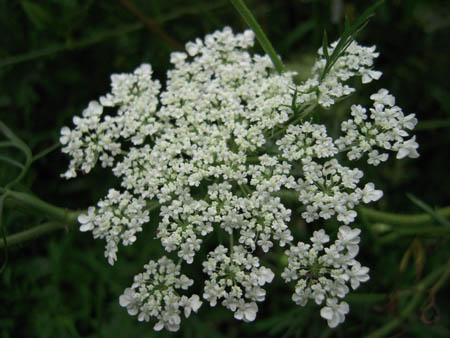 [Figure caption and citation for the preceding image starts]: WormwoodFrom private collection of Gerald O'Malley [Citation ends].
[Figure caption and citation for the preceding image starts]: WormwoodFrom private collection of Gerald O'Malley [Citation ends].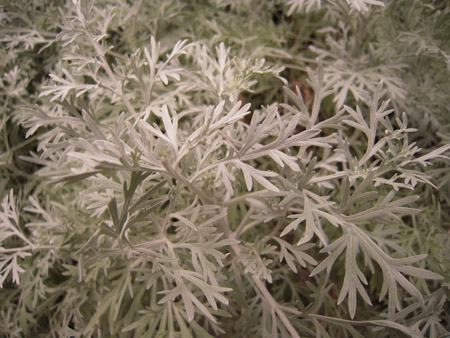 [Figure caption and citation for the preceding image starts]: Blue sageFrom private collection of Gerald O'Malley [Citation ends].
[Figure caption and citation for the preceding image starts]: Blue sageFrom private collection of Gerald O'Malley [Citation ends].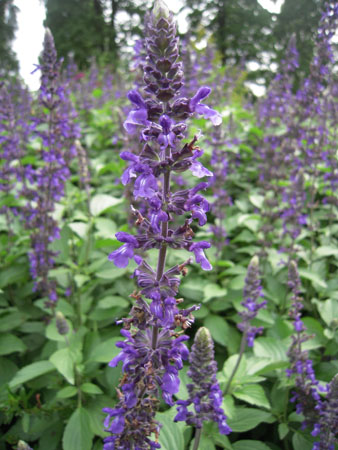 [Figure caption and citation for the preceding image starts]: Blue sageFrom private collection of Gerald O'Malley [Citation ends].
[Figure caption and citation for the preceding image starts]: Blue sageFrom private collection of Gerald O'Malley [Citation ends].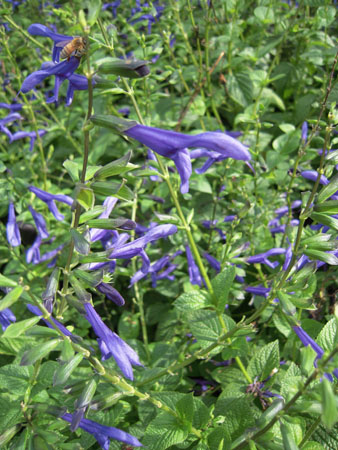 [Figure caption and citation for the preceding image starts]: Star aniseFrom private collection of Gerald O'Malley [Citation ends].
[Figure caption and citation for the preceding image starts]: Star aniseFrom private collection of Gerald O'Malley [Citation ends]. [Figure caption and citation for the preceding image starts]: Star aniseFrom private collection of Gerald O'Malley [Citation ends].
[Figure caption and citation for the preceding image starts]: Star aniseFrom private collection of Gerald O'Malley [Citation ends]. [Figure caption and citation for the preceding image starts]: Star aniseFrom private collection of Gerald O'Malley [Citation ends].
[Figure caption and citation for the preceding image starts]: Star aniseFrom private collection of Gerald O'Malley [Citation ends].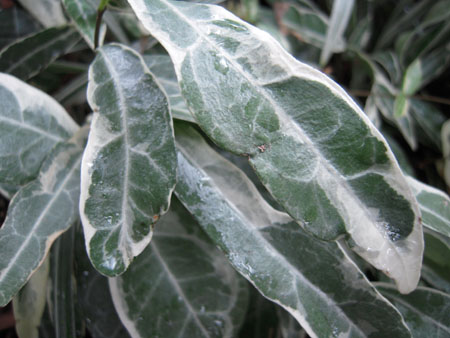 [Figure caption and citation for the preceding image starts]: GinkgoFrom private collection of Gerald O'Malley [Citation ends].
[Figure caption and citation for the preceding image starts]: GinkgoFrom private collection of Gerald O'Malley [Citation ends].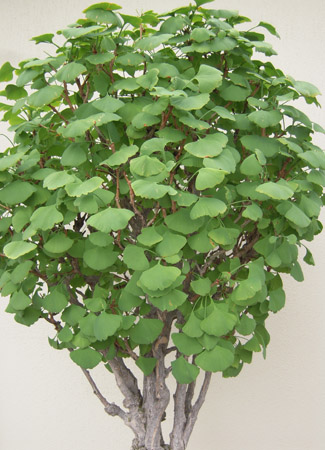
Other diagnostic factors
common
nausea
Can occur after ingestion of virtually any plant. May specifically occur after ingestion of gastrotoxic plants including pokeweed, inkberry, holly berries, mistletoe berries, oxalis, ipecac, white mulberry, or ginkgo.
May also occur due to acidosis following cassava or prunus plant ingestion.[Figure caption and citation for the preceding image starts]: HollyFrom private collection of Gerald O'Malley [Citation ends]. [Figure caption and citation for the preceding image starts]: OxalisFrom private collection of Gerald O'Malley [Citation ends].
[Figure caption and citation for the preceding image starts]: OxalisFrom private collection of Gerald O'Malley [Citation ends].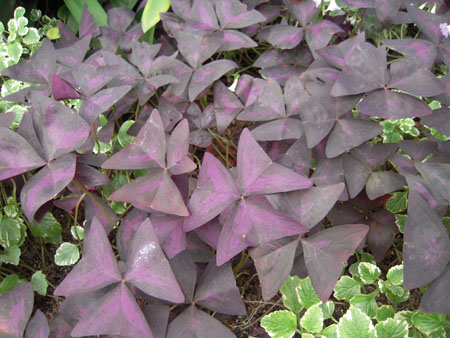 [Figure caption and citation for the preceding image starts]: GinkgoFrom private collection of Gerald O'Malley [Citation ends].
[Figure caption and citation for the preceding image starts]: GinkgoFrom private collection of Gerald O'Malley [Citation ends].
vomiting
Can occur after ingestion of virtually any plant. May specifically occur after ingestion of gastrotoxic plants (e.g., pokeweed, inkberry, holly berries, mistletoe berries, oxalis, ipecac, white mulberry, ginkgo); Colchicum, periwinkle, mayapple, cardiac glycosides, type 2 ribosome-inactivating proteins (e.g., castor bean [Ricinus communis]), caffeine- or theophylline-containing plants, or nicotine-like alkaloid plants (e.g., blue cohosh, poison hemlock, golden chain, Indian tobacco, lupin, laburnum, or tobacco).
May also occur due to acidosis following cassava or prunus plant ingestion.[Figure caption and citation for the preceding image starts]: HollyFrom private collection of Gerald O'Malley [Citation ends]. [Figure caption and citation for the preceding image starts]: OxalisFrom private collection of Gerald O'Malley [Citation ends].
[Figure caption and citation for the preceding image starts]: OxalisFrom private collection of Gerald O'Malley [Citation ends]. [Figure caption and citation for the preceding image starts]: GinkgoFrom private collection of Gerald O'Malley [Citation ends].
[Figure caption and citation for the preceding image starts]: GinkgoFrom private collection of Gerald O'Malley [Citation ends].
abdominal pain
Cramping can occur after ingestion of virtually any plant. May specifically occur after ingestion of gastrotoxic plants including pokeweed, inkberry, holly berries, mistletoe berries, oxalis, ipecac, white mulberry, or ginkgo.
May also occur due to invisible bleeding (haemorrhage from spontaneous intra-abdominal bleeding) after ingestion of sweet vernal grass, tonka beans, bedstraw, sweet clover, red clover, or horse chestnut.
May also occur with bone marrow suppression after ingestion of autumn crocus, meadow saffron, Madagascar periwinkle, North American mayapple, Podophyllum species, castor bean, or ackee fruit.
May also occur due to acidosis following cassava or prunus plant ingestion.[Figure caption and citation for the preceding image starts]: HollyFrom private collection of Gerald O'Malley [Citation ends]. [Figure caption and citation for the preceding image starts]: OxalisFrom private collection of Gerald O'Malley [Citation ends].
[Figure caption and citation for the preceding image starts]: OxalisFrom private collection of Gerald O'Malley [Citation ends]. [Figure caption and citation for the preceding image starts]: GinkgoFrom private collection of Gerald O'Malley [Citation ends].
[Figure caption and citation for the preceding image starts]: GinkgoFrom private collection of Gerald O'Malley [Citation ends]. [Figure caption and citation for the preceding image starts]: Castor beanFrom private collection of Gerald O'Malley [Citation ends].
[Figure caption and citation for the preceding image starts]: Castor beanFrom private collection of Gerald O'Malley [Citation ends].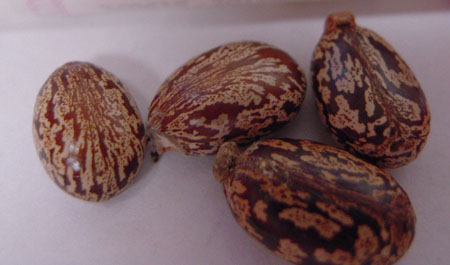
diarrhoea
Occurs after ingestion of many plant species. May specifically occur after ingestion of gastrotoxic plants (e.g., pokeweed, inkberry, holly berries, mistletoe berries, oxalis, ipecac, ginkgo) or muscarinic plants (e.g., betel nut, calabar bean, ordeal bean, pilocarpus plants).
May also occur with bone marrow suppression after ingestion of autumn crocus, meadow saffron, Madagascar periwinkle, North American mayapple, Podophyllum species, castor bean, or ackee fruit.[Figure caption and citation for the preceding image starts]: HollyFrom private collection of Gerald O'Malley [Citation ends]. [Figure caption and citation for the preceding image starts]: OxalisFrom private collection of Gerald O'Malley [Citation ends].
[Figure caption and citation for the preceding image starts]: OxalisFrom private collection of Gerald O'Malley [Citation ends]. [Figure caption and citation for the preceding image starts]: GinkgoFrom private collection of Gerald O'Malley [Citation ends].
[Figure caption and citation for the preceding image starts]: GinkgoFrom private collection of Gerald O'Malley [Citation ends]. [Figure caption and citation for the preceding image starts]: Castor beanFrom private collection of Gerald O'Malley [Citation ends].
[Figure caption and citation for the preceding image starts]: Castor beanFrom private collection of Gerald O'Malley [Citation ends].
dyspnea
May be direct effect of digitalis-like glycosides (e.g., monkshood, lily of the valley, foxglove, oleander, red squill); muscarinics (e.g., betel nut, calabar bean, ordeal bean, pilocarpus plants), which can cause non-cardiogenic pulmonary oedema; or nicotine-like alkaloids (e.g., blue cohosh, poison hemlock, golden chain, Indian tobacco, lupin, or tobacco), which can cause respiratory depression. Sabah vegetables may cause bronchiolitis obliterans.
May also occur due to anaemia (following invisible bleeding) after ingestion of sweet vernal grass, tonka beans, bedstraw, sweet clover, red clover, or horse chestnut.
May also occur with bone marrow suppression after ingestion of autumn crocus, meadow saffron, Madagascar periwinkle, North American mayapple, Podophyllum species, castor bean, or ackee fruit.
May also occur due to acidosis following cassava or prunus plant ingestion.[Figure caption and citation for the preceding image starts]: OleanderFrom private collection of Gerald O'Malley [Citation ends]. [Figure caption and citation for the preceding image starts]: Castor beanFrom private collection of Gerald O'Malley [Citation ends].
[Figure caption and citation for the preceding image starts]: Castor beanFrom private collection of Gerald O'Malley [Citation ends].
skin flushing
May be direct effect of antimuscarinics (e.g., jimsonweed, locoweed, belladonna, henbane, European/true mandrake).
dermatitis
Plant-induced dermatitis and mucous membrane irritation is typically caused by irritant chemicals such as oxalate crystals (e.g., philodendron, caladium, stinging nettles, peace lily).[21]
Ingestion of ginkgo seeds/leaves/leaf extracts can also cause allergic skin reactions.
Photodermatitis may occur with plants with furocoumarins (Rue, celery, lime, bergamot).[Figure caption and citation for the preceding image starts]: GinkgoFrom private collection of Gerald O'Malley [Citation ends].
dermatological/mucosal irritation
May occur due to ingestion of phenylpropanoid from chili or cayenne peppers;[34] or oxalate raphide from philodendron, caladium, oxalis, peace lily, or mechanical irritants such as stinging nettle and cacti.[21][Figure caption and citation for the preceding image starts]: CapsicumFrom private collection of Gerald O'Malley [Citation ends].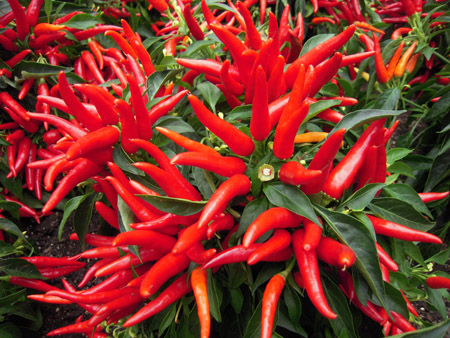 [Figure caption and citation for the preceding image starts]: CapsicumFrom private collection of Gerald O'Malley [Citation ends].
[Figure caption and citation for the preceding image starts]: CapsicumFrom private collection of Gerald O'Malley [Citation ends]. [Figure caption and citation for the preceding image starts]: CapsicumFrom private collection of Gerald O'Malley [Citation ends].
[Figure caption and citation for the preceding image starts]: CapsicumFrom private collection of Gerald O'Malley [Citation ends]. [Figure caption and citation for the preceding image starts]: OxalisFrom private collection of Gerald O'Malley [Citation ends].
[Figure caption and citation for the preceding image starts]: OxalisFrom private collection of Gerald O'Malley [Citation ends].
uncommon
visible bleeding: epistaxis, melaena, haematuria, haematemesis, haemoptysis
Visible bleeding may result from ingestion of sweet vernal grass, tonka beans, bedstraw, sweet clover, red clover, horse chestnut, or ginkgo. [Figure caption and citation for the preceding image starts]: GinkgoFrom private collection of Gerald O'Malley [Citation ends].
headache
May occur due to intracerebral haemorrhage from ingestion of sweet vernal grass, tonka beans, bedstraw, sweet clover, red clover, or horse chestnut.
May also occur due to acidosis following cassava or prunus plant ingestion.
chest pain
May occur due to internal haemorrhage after ingestion of sweet vernal grass, tonka beans, bedstraw, sweet clover, red clover, or horse chestnut.
muscle pain/swelling
May occur due to internal haemorrhage from ingestion of sweet vernal grass, tonka beans, bedstraw, sweet clover, red clover, or horse chestnut.
skin pallor
May occur due to external or internal haemorrhage from ingestion of sweet vernal grass, tonka beans, bedstraw, sweet clover, red clover, or horse chestnut.
May also occur with bone marrow suppression after ingestion of autumn crocus, meadow saffron, Madagascar periwinkle, North American mayapple, Podophyllum species, castor bean, or ackee fruit.[Figure caption and citation for the preceding image starts]: Castor beanFrom private collection of Gerald O'Malley [Citation ends].
easy bruising
May occur with bone marrow suppression after ingestion of autumn crocus, meadow saffron, Madagascar periwinkle, North American mayapple, Podophyllum species, castor bean, or ackee fruit.[Figure caption and citation for the preceding image starts]: Castor beanFrom private collection of Gerald O'Malley [Citation ends].
petechial spotting
May occur with bone marrow suppression after ingestion of autumn crocus, meadow saffron, Madagascar periwinkle, North American mayapple, Podophyllum species, castor bean, or ackee fruit.[Figure caption and citation for the preceding image starts]: Castor beanFrom private collection of Gerald O'Malley [Citation ends].
jaundice
May occur after ingestion of hepatotoxic plants (e.g., blue-green algae, ragworts, other Senecio species, rattleweeds, Heliotropium species, distaff thistle, kava kava, creosote bush).[Figure caption and citation for the preceding image starts]: SenecioFrom private collection of Gerald O'Malley [Citation ends].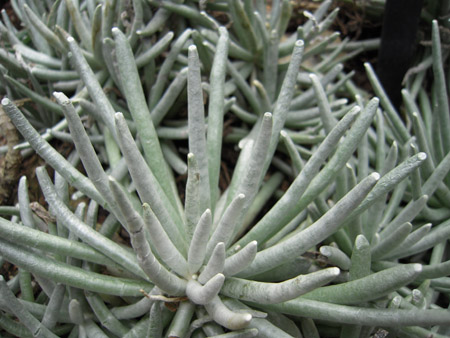
asterixis
This sign of chronic liver disease may occur over time after ingestion of hepatotoxic plants (e.g., blue-green algae, ragworts, other Senecio species, rattleweeds, Heliotropium species, distaff thistle, kava kava, creosote bush).[Figure caption and citation for the preceding image starts]: SenecioFrom private collection of Gerald O'Malley [Citation ends].
ascites
This sign of chronic liver disease may occur over time after ingestion of hepatotoxic plants (e.g., blue-green algae, ragworts, other Senecio species, rattleweeds, Heliotropium species, distaff thistle, kava kava, creosote bush).[Figure caption and citation for the preceding image starts]: SenecioFrom private collection of Gerald O'Malley [Citation ends].
palmar erythema
This sign of chronic liver disease may occur over time after ingestion of hepatotoxic plants (e.g., blue-green algae, ragworts, other Senecio species, rattleweeds, Heliotropium species, distaff thistle, kava kava, green tea capsules).[Figure caption and citation for the preceding image starts]: SenecioFrom private collection of Gerald O'Malley [Citation ends].
spider angiomata
This sign of chronic liver disease may occur over time after ingestion of hepatotoxic plants (e.g., blue-green algae, ragworts, other Senecio species, rattleweeds, Heliotropium species, distaff thistle, kava kava, green tea capsules).[Figure caption and citation for the preceding image starts]: SenecioFrom private collection of Gerald O'Malley [Citation ends].
diaphoresis
May be direct effect of muscarinics (e.g., betel nut, calabar bean, ordeal bean, pilocarpus plants) or nicotine-like alkaloids (e.g., blue cohosh, poison hemlock, golden chain, Indian tobacco, lupin, laburnum or tobacco).
dry skin
May be direct effect of antimuscarinics (e.g., jimsonweed, locoweed, belladonna, henbane, European/true mandrake) or induced by gastroenteritis from gastrotoxic plant ingestion.
fever
May be direct effect of antimuscarinics (e.g., jimsonweed, locoweed, belladonna, henbane, European/true mandrake) or nicotine-like alkaloids (e.g., blue cohosh, poison hemlock, golden chain, Indian tobacco, lupin, laburnum, or tobacco).
May also occur with bone marrow suppression after ingestion of autumn crocus, meadow saffron, Madagascar periwinkle, North American mayapple, Podophyllum species, castor bean, or ackee fruit.[Figure caption and citation for the preceding image starts]: Castor beanFrom private collection of Gerald O'Malley [Citation ends].
urinary retention
May be direct effect of antimuscarinic plants (e.g., jimsonweed, locoweed, belladonna, henbane, European/true mandrake).
constipation
May occur after ingestion of antimuscarinic plants (e.g., jimsonweed, locoweed, belladonna, henbane, European/true mandrake).
hyperventilation
May occur due to acidosis following cassava or prunus plant ingestion.
fasciculations
May be direct effect of nicotine-like alkaloids (e.g., blue cohosh, poison hemlock, golden chain, Indian tobacco, lupin, or tobacco).
neuromuscular weakness
May be direct effect of neurotoxic plants (e.g., monkshood, wolfsbane, devil helmet, poison nut, quaker button, strychnos seed, Chondrodendron tomentosum, Strychnos toxifera, wireweed, Astragalus species, azalea, fetterbush, Kalmia species, buckthorn, coyotilla, tullidora).
altered sensation
May be direct effect of neurotoxic plants (e.g., monkshood, wolfsbane, devil helmet, poison nut, quaker button, strychnos seed, Chondrodendron tomentosum, Strychnos toxifera, wireweed, Astragalus species, azalea, fetterbush, Kalmia species, buckthorn, coyotilla, tullidora).
Risk factors
strong
foraging for wild plants to eat
Accurate plant identification can be difficult, and amateur plant foragers often ingest misidentified plants.[1]
brewing wild plants into tea
Ingesting small amounts of most plants results in minimal symptoms, but when plant extract is concentrated, symptoms may result from ingestion of even small amounts of some concentrated plant extract.
children found or suspected of ingesting plants
Is usually a consequence of accidental ingestion and environmental experimentation. In general, when children are found ingesting plants, the doses are usually small, and the plants are often known/identifiable.[1] There are a few plants with high risk from small doses (e.g., poison or water hemlock, autumn crocus, glory lily, mayapple, jequirity bean, yew leaves), although these are not commonly ingested by children. Potentially poisonous plants should not be used as decorative houseplants.
Use of this content is subject to our disclaimer